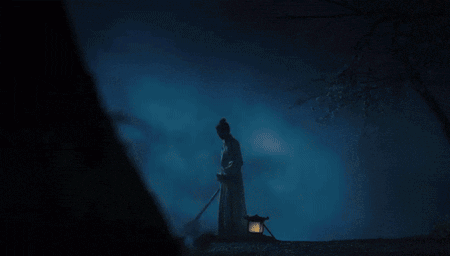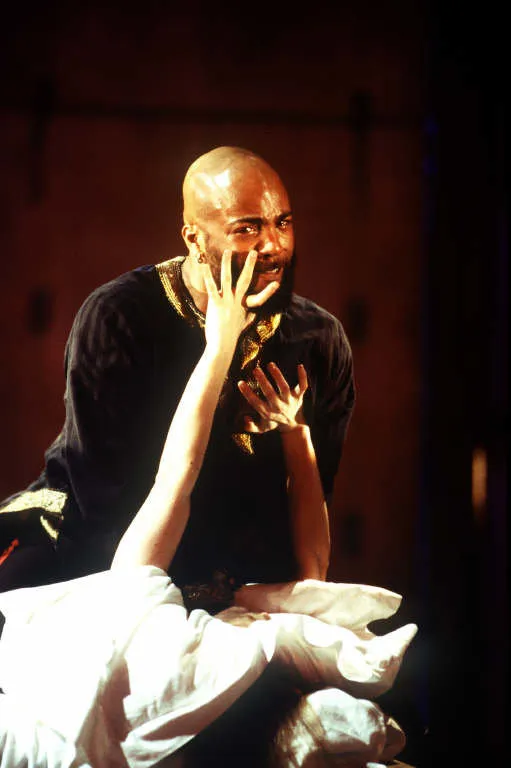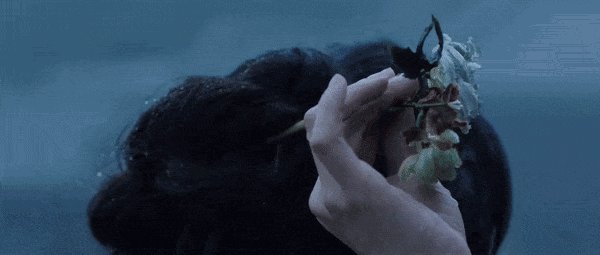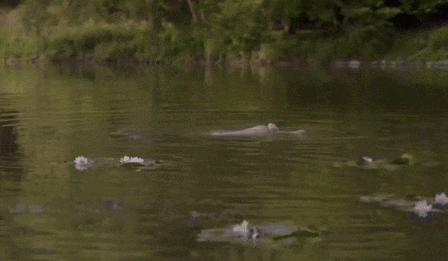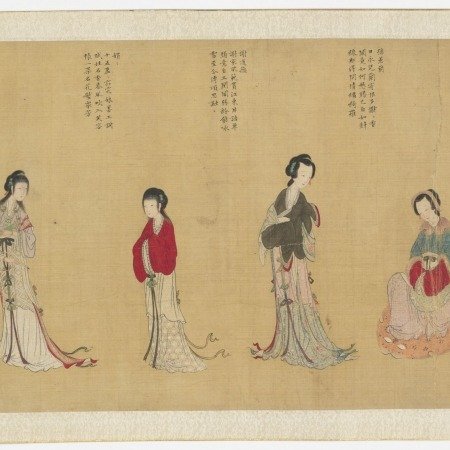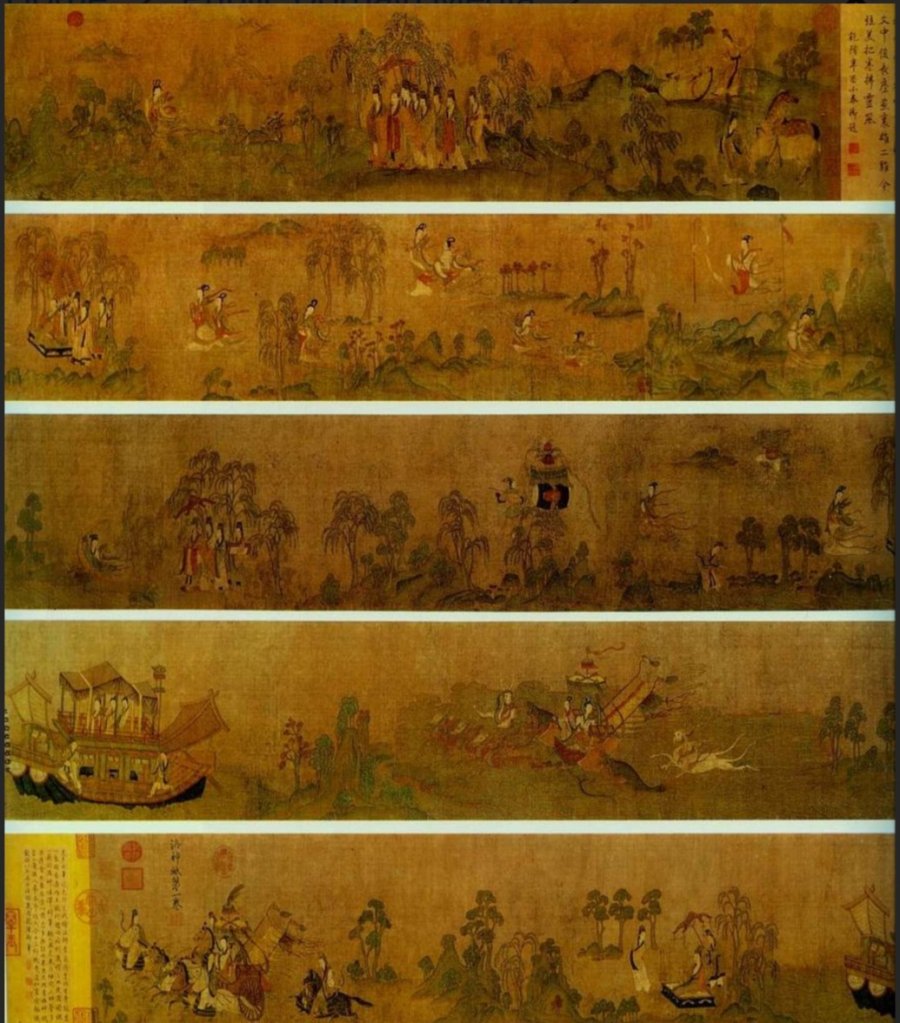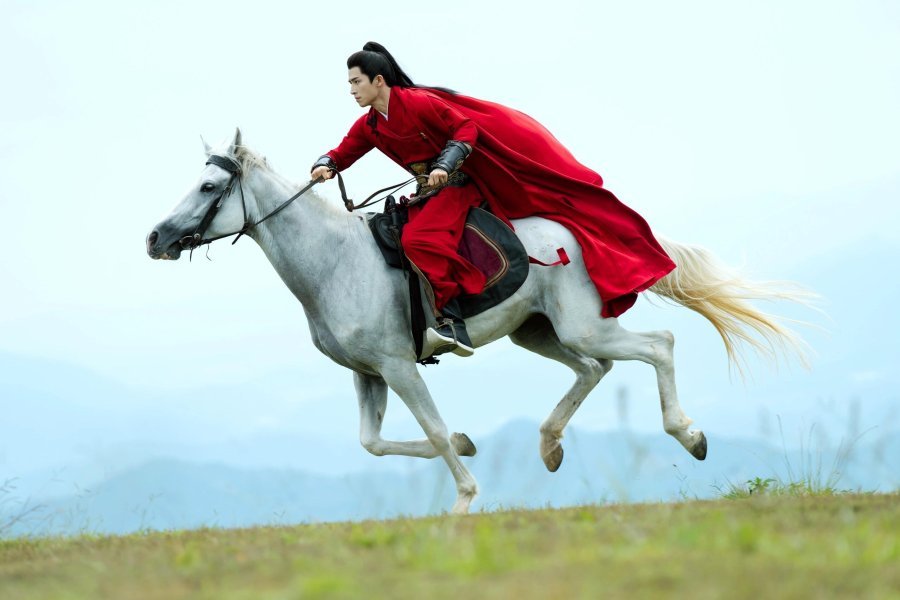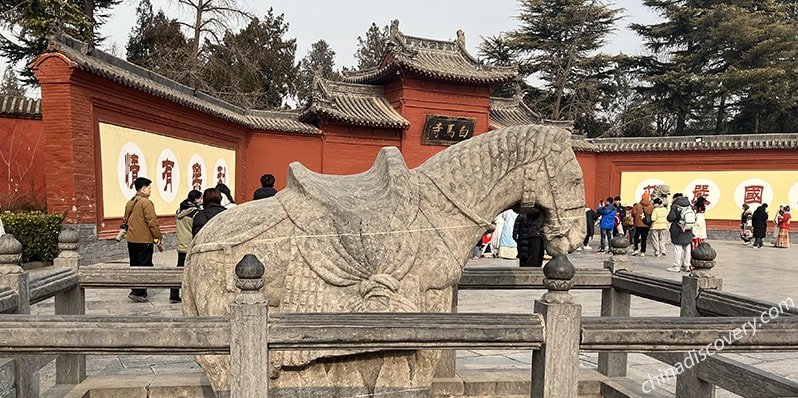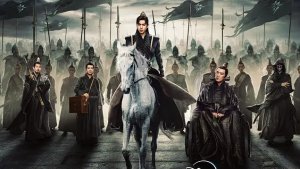 2024 Chinese Short-Length Series Worth Watching (Part 1)
2024 Chinese Short-Length Series Worth Watching (Part 1)
Warning! Some content and images may contain spoilers! |
The Double... a fan of artistic conceptions with an intelligent, coherent, and impeccable plot. Blood and tears alternate with extreme strength and beauty, cruelty and poetry interact with vigor and grace. Human turpitude, vile ambitions, virtues, courage, lightness, and fragility move in an absolutely precise game of chess.
Theatre, painting, music, literature, dance, symbols: welcome to the universe of The Double!

The theatrical concepts present in The Double have a strong emotional and visual impact. Right at the beginning, as the only solution to survive, Xue Fang Fei (Wu Jin Yan) assumes the identity of Jiang Li (Yang Chao Yue), and from then on she acts as an actress in the various stages of the plot: the watcher sees a theater within the theater. Her search for justice has common points with Xiao Heng/Duke Su's (Wang Xing Yue) objectives. She knows that he realizes, as a theater lover, that Jiang Li is just her character. Xiao Heng/Duke Su reacts to this by acting with her in a tacit theater. With dialogue full of refined irony, they start to create their own play. As the love for theater is Xiao Heng/Duke Su's characteristic, in one of the scenes he invites Jiang Li/Xue Fang Fei to watch a play. Governor Tong (Liu Tian Zuo) is also a theatre lover and reinforces the conception of certain scenes within theatrical logic.

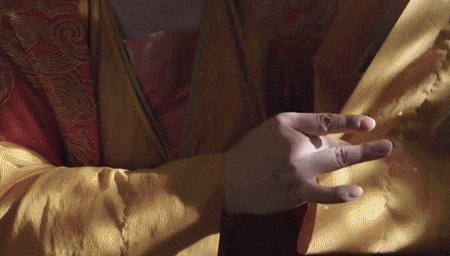
In fact, we even see two scenes of Governor Tong performing (somewhat caricatured, episodes 16 - 17) in a dark atmosphere, well characterized with makeup and clothing, along with one of his servants who accompanies him with the traditional gongs, cymbals, and the tao ku, percussion instruments used in theatrical performances. It's interesting to note that the traditional Canjun Opera (Tang Dynasty) has two characters (later expanded to four), the main one being the corrupt official, such as Governor Tong. The Double hides many subtleties.
Canjun OperaAccording to Zhao Shu (Book of Zhao), canjunxi originated from the Later Zhao Dynasty (319 - 351) during the Sixteen Kingdoms period. Wang Guowei (Chinese historian and poet, 1877 - 1927) believed that canjunxi (Canjun Opera) was an early precursor of Chinese Opera. The comedic canjunxi involved two performers, known as canjun ("adjutant") and canghu (lit. "blue falcon"). There is evidence that female artists emerged in the late Tang Dynasty, marking the beginning of a new style that incorporated features of the gewuxi (narrative ballet in which dancers could speak in simple dialogue) into the canjunxi. Japanese historical documents suggest that canjunxi is related to a musical style called canjun, combined with dance. The late Tang play Lu Canjun (Adjutant Lu) was the first known canjunxi. |
There's another important scene that deserves a comment: the exorcism scene, performed by the imperial diviner Liu Wen Cai (Zheng Xiao Dong), ex-lover Jiang Li/Xue Fan Fei's stepmother, Ji Shu Ran (Chen Chiao En), in episode 25. It has an intense theatricality. The scene has a plasticity beauty marked by vigorous choreography with an impeccable aesthetic, resembling a dance, with intense dramatic effect. The rite has shamanic characteristics and takes place in a ghostly atmosphere that promotes a tense and frightening climate. This scene stands out also initially seen from a higher plane and is aesthetically and culturally relevant, as it clearly evokes nuoxi and dixi religious exorcism theaters of Nuo Opera. Its origin dates back to the Shang Dynasty when it was performed as nuoji, a special sacrificial ceremony. Its development happens during the Tang Dynasty. Today, it can be seen during the Spring Festival.
Nuo OperaNuo Opera is considered one of China's non-material cultural legacies and one of its most popular folk operas. Nuo Opera or Nuo Drama is characterized by the use of fierce masks, peculiar dresses and adornments, specific language used in performances and mysterious scenes, as well as dances and songs. It's a religious presentation linked to Nuoism, a type of Chinese popular religion. Its purpose is to ward off demons, illnesses, and evil influences, and also to ask the gods for blessings. Its primitive form dates back to antiquity. The term nuoji is a sacrificial activity or ceremony to worship gods and ancestors. "Ji" means sacrifice or sacrificial activities and events. The exact date nuoji was formed is unknown, but the nuo ceremony was first recorded on oracle bones during the Shang Dynasty (17th to 11th centuries BC) and had its apogee in the Zhou Dynasty (11th century to 256 BC). Today, Nuo Opera's popularity has declined, but it can be seen during the Spring Festival and other important traditional Chinese holidays in Guizhou, Hunan, Jiangxi, Yunnan, Sichuan, and Anhui provinces. |
Among the characters, The Double even has the theatrical role of the clown, the adorable and burlesque Jiang Jing Rui (He Feng Tian), Jiang Li/Xue Fang Fei's cousin, exaggerated in everything (voice, emotional reactions, body expression), like the clown chou, from Beijing Opera.
in The Double, it's possible to identify the characteristics of Greek theater and its peculiar structural concept that comprises, in addition to the characters, the chorus, a group of actors who describe and comment on the main action of the play to the watcher. The chorus is present in The Double during Jiang Li/Xue Fang Fei's guzheng performance (episode 10), represented by the examiners Judge Mian Ju (Shen Xue Wei), Madam Xiao De Yin (Lin Jing), as well as Duke Su and some of the characters who are in the scene, all of them playing the role of the chorus.
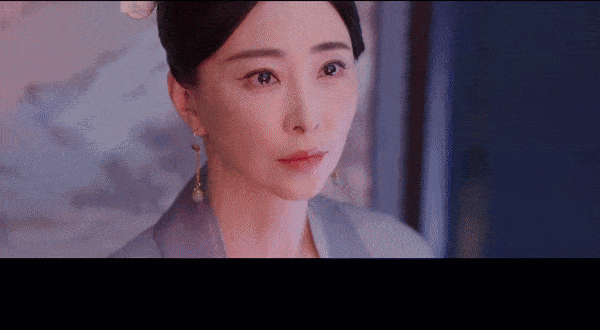
The theatrical concept is a characteristic of Chinese and Japanese cinematograph works. The dawn of Chinese cinema was centered on traditional opera. Fei Mu (1906 - 1951) made the first experience of bringing the aesthetics of traditional Chinese painting to the cinema screen. This conception is considered a mark in the history of Chinese cinema.
I've watched several films considered masterpieces in which the artistic conceptions can be clearly recognized, like the Chinese director Jia Zhang Ke (his artistic conception interacts with roller paintings). Akira Kurosawa's work refers to No, traditional Japanese theatre. Most of the actors were from Kabuki (its influence is still present in contemporary Japanese cinema). The consequence of this conception is the transposition of the watcher into the scene, enhancing the emotional strength.
From the perspective of plays and cinema, it is important to highlight the many Chinese adaptations of W. Shakespeare's works, all of them from the point of view of Chinese culture. I love Shakespeare. I'm a lyrical singer as well as a pianist and flutist, as a musician I have a special interest in Renaissance. The Renaissance art revives all the Greek art concepts, Shakespeare's theater and poetry are not an exception. I researched the songs sung in his tragedies. I recorded a CD of Renaissance and Baroque music for voice and flute with three songs by Shakespeare. One of the songs is the one Desdemona sings, "The Willow Song" (the link is below), a few before Othello kills her (Othello, the Moor of Venice, act 5, scene 2). Desdemona is falsely accused of adultery, just as Jiang Li/ Xue Fang Fei, who was also killed, and at that moment she is playing guzheng she is Desdemona... Therefore, Jiang Li/Xue Fang Fei's similarity with Desdemona has points of convergence with Shakespeare.
The Willow Song
|
Othello, the Moor of VeniceIt's a tragedy in five acts by William Shakespeare, written in 1603 - 04 and published in 1622. Othello, a heroic Moorish general in the service of Venice, appoints Cassius, not Iago, as his chief lieutenant. Jealous of Othello's success and envious of Cassio, Iago plots Othello's defeat by falsely implicating Desdemona, his wife, and Cassio, his chief lieutenant, in adultery. Making use of a handkerchief Othello has unwittingly dropped, belonging to Desdemona, Iago persuades Othello that Desdemona has given the handkerchief to Cassio as a love token. Othello becomes so involved in Iago's lie that he believes he is no longer attractive to his young white Venetian wife because he is Moorish and an older man. Overcome by jealousy, Othello kills Desdemona. Upon learning soon after that Desdemona is innocent and a victim of Iago's perverse plot, he kills himself. |
I also should mention Wanning (Li Meng), her final scene, presented with spectacular plasticity, with three main colors, gray, white, and red, especially dark gray, despite its dense atmosphere, it reacts like a redemptive veil surrounding Wanning's drama/tragedy, the rain washes away her miserable and sad life, the color red screams in contrast to the beatitude of Wanning's smile, reminding me of Ophelia, who also smiles as the river current carries her along, floating like a petal, with a flower in her hands and drowns (Hamlet, Prince of Denmark, act 4, scene 7). This act is interpreted as suicide. Ophelia went mad due to her fiancé Hamlet's rejection. Her family is restricted to her father and brother, like Wanning, who is mentally disturbed and rejected as a daughter, as a sister, as a woman, and also commits suicide. These details reveal similarities with Shakespeare's work.
Hamlet, the Prince of DenmarkA tragedy written between 1599 and 1601, and among the most performed texts in the world, the play narrates Prince Hamlet's oppressive suffering and deep hatred, obsessed with avenging the death of his father, King Hamlet, the King of Denmark, murdered by Claudius, the king's brother. Soon after, he marries his accomplice, Gertrude, the queen and mother of the young Hamlet, and thus assumes the throne. Its plot develops themes such as betrayal, revenge, incest, corruption, and morality. Ophelia is a young woman from the high nobility of Denmark, engaged to Prince Hamlet, a victim of the prince's obsession with revenge and the loss she suffers. Her betrothed, increasingly disturbed, offends and attacks Ophelia, advising her to enter a convent. In the meantime, her brother travels and shortly afterward her father is mistakenly killed by Prince Hamlet. Ophelia stays all alone. In this context of deep pain, contempt, loss, and isolation, Ophelia becomes mentally ill and loses her lucidity. She's seen entering a brook while singing and holding flowers, she drowns. It is assumed that she committed suicide. |

The transfiguration of Jiang Li/Xue Fang Fei through musical interpretation (competition scene, episode 10), is a poetic license, it should be seen as a visual metaphor. The music of the scene is endowed with melody and lyrics of great beauty and strength, it exerts a powerful emotional effect, constituting an essential ally that enhances the images, feelings, sensations, perceptions, emotions, and imagination. How do we convey to the watcher the painful drama that takes place in the inner life of Jiang Li/Xue Fang Fei?
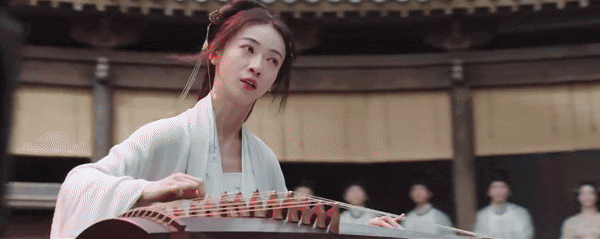
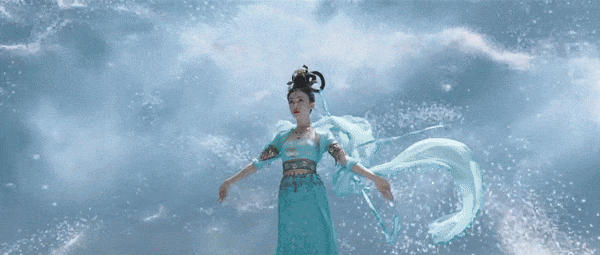
This scene of Jiang Lu/Xue Fang Fei playing "Pear Blossoms Turn White" made me cry (a lot! I rewatched it many times), as a woman in a particular way, I could feel her pain. The dramaticality of the scene, which was claimed of the Xanxia genre in some comments, has a peculiar character: one cannot confuse Xianxia with a supernatural phenomenon associated with elements of surrealism. These elements have no relation to the fantastic/fantasy character of the Xianxia genre.
 The Double deals with three distinct aspects: mystic (when Jiang Li/Xue Fang Fei sees and talks to Jiang Li after her death) and supernatural phenomena, associated with surrealism (when Jiang Li/Xue Fang Fei plays guzheng). These three forces are combined with balance. The scene is poetic and surprises the watcher, when, suddenly, we see what we imagine to be the spirit of Jiang Li/Xue Fang Fei rising to the sky during the presentation as if describing a poem about Jiang Li/Xue Fang Fei's "death and transfiguration".
The Double deals with three distinct aspects: mystic (when Jiang Li/Xue Fang Fei sees and talks to Jiang Li after her death) and supernatural phenomena, associated with surrealism (when Jiang Li/Xue Fang Fei plays guzheng). These three forces are combined with balance. The scene is poetic and surprises the watcher, when, suddenly, we see what we imagine to be the spirit of Jiang Li/Xue Fang Fei rising to the sky during the presentation as if describing a poem about Jiang Li/Xue Fang Fei's "death and transfiguration".
Despite the vigorous emotional impact of the images, the lyrical aspect softens the perception, configuring itself as a visual poem, taking on the place of the protagonist of the Jiang Li/Xue Fang Fei scene. From my point of view, the traumatic experience of Jiang Li/Xue Fang Fei brings expressionistic, oneiric, and symbolic representations with a poetic function due to the possibility of the watcher's multiple interpretations. The images are a descriptive representation of a poem, as happens in music when the sound of the wind, the rain, and the river can be simulated by melodic movements and peculiar sounds of musical instruments. Some examples of this are the works Death and Transfiguration (Symphonic Poem) by Richard Strauss (it describes what goes on in an artist's thoughts at the moment he is dying, like Jiang Li/Xue Fang Fei transfiguration); Symphony N°6 (Pastoral) by L. van Beethoven, The Four Seasons by A. Vivaldi, "Flight of the Bumblebee" by R. Korsakov, and Symphonic Poems by Franz Liszt. These works describe texts, poems, paintings, plays, and elements of Nature. Franz Liszt was the creator of this genre of composition.


 From the point of view of Chinese art and aesthetics, there are numerous scenes in The Double that stand out as paintings that resemble masterpieces of Chinese painting. Everything is created with subtlety and refinement from the point of view of ancient Chinese culture, its discreet, gentle, and delicate art, its relationship with the mystique of death, and its profound ability to observe the most imperceptible detail.
From the point of view of Chinese art and aesthetics, there are numerous scenes in The Double that stand out as paintings that resemble masterpieces of Chinese painting. Everything is created with subtlety and refinement from the point of view of ancient Chinese culture, its discreet, gentle, and delicate art, its relationship with the mystique of death, and its profound ability to observe the most imperceptible detail.
Left: The Kangxi Emperor's Southern Inspection Tour, Scroll Three: Ji'nan to Mount Tai - Wang and assistants -
Qing Dynasty
Right: Legendary Beauties through the Ages - Follower of Qiu Ying - Qing Dynasty
Twin Pines, Level Distance - Zhao Mengfu - Yuan Dynasty
Nymph of the Luo River - Gu Kaizhi - Song Dynasty
The Double evokes ancient scroll paintings. This kind of painting is presented in a horizontal and distant plane, representing landscapes that unfold horizontally as if telling a story. The objects/people in the scene are seen from afar and on a higher plane. The director uses this logic not only with lateral camera movement but also from a higher plane, exactly as Jiang Li/Xue Fang Fei scene is initially presented (episode 10) and in the last scene of episode 40: she's seen from afar, at the top of the mountain, near the pear tree, Duke Su arrives riding a white horse, also seen from a distant plane. These scenes unfold like paintings in movement and stretch out into a large empty space of the landscape (peculiar to this kind of painting), destined to be filled by the imagination (in Chinese cinema we can see this kind of conception in Jia Zhang Ke's works).
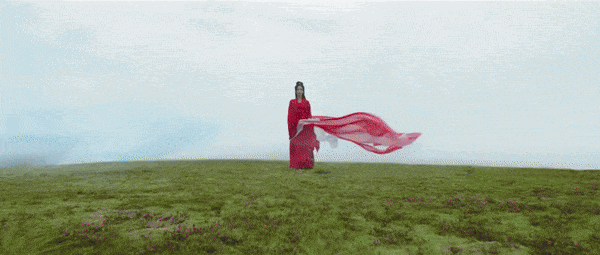

In The Double, many scenes' details communicate reality through several symbols. Throughout the plot, many of them are part of the non-explicit narrative...
Duke Su's fan
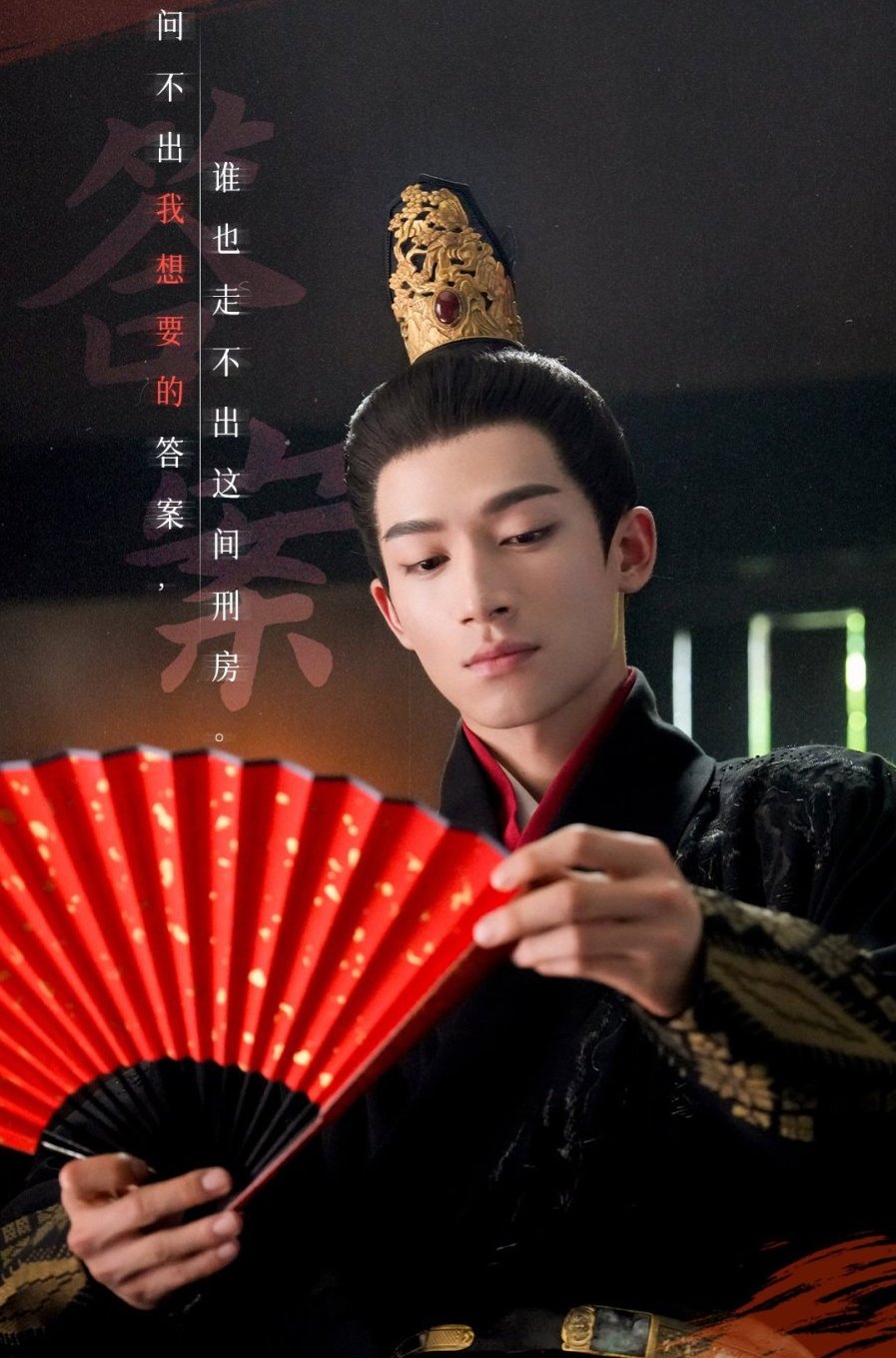 This character, of an untouchable elegance, discretion, and noble subtlety, is presented with this "innocent" and traditional prop. The military strategists and Taoist priests preferred feather fans. But Duke Su...
This character, of an untouchable elegance, discretion, and noble subtlety, is presented with this "innocent" and traditional prop. The military strategists and Taoist priests preferred feather fans. But Duke Su...
Duke Su doesn't have or use weapons and rarely uses his fists and feet in self-defense or when defending Jiang Li/Xue Fang Fei. The martial strikes he delivers are as contained and exact as his attitude, his fan is his companion, his shield and sword. We don't see blood spatter or overexploited violence, the series conception disregarded this trivialization and gave Duke Su a unique way of fighting against his opponents, conveying much more emotion, in addition to the aesthetic beauty of the fan and body movements in a choreography that resembles a dance with agile, geometric and energetic steps, with a "fatal sensuality" atmosphere, very similar to tango (Argentine dance).
Although the fan symbolizes status and power, the Duke Su's fan hides many unique uses and personal characteristics that surprise. He is simple, although austere, almost monastic. His fan is like his personality: closed most of the time and open in extreme cases, when he allows himself to show his feelings or when he needs to act as a warrior.
The fan is perfect for Duke Su!
The plum tree
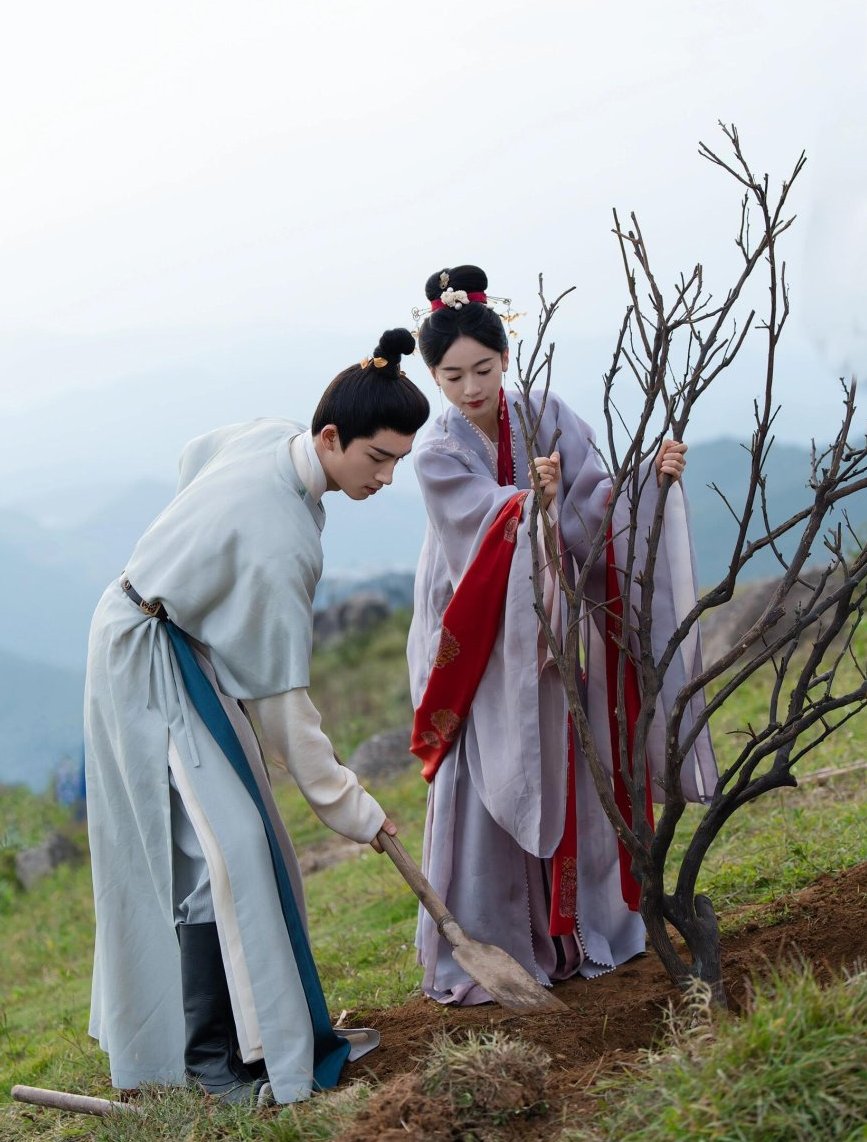 Duke Su and Jiang Li/Xue Fang Fei planted a small plum tree together. As time passes, the tree grows, marking Duke Su's glorious return from the war. In Chinese philosophy and tradition, the plum tree represents the end of winter and the beginning of spring. It symbolizes resilience, hope, and perseverance in the face of adversity, as its flowers bloom more vibrantly even in the snow, with harsh winter being the season in which the plum tree reaches its flowering peak.
Duke Su and Jiang Li/Xue Fang Fei planted a small plum tree together. As time passes, the tree grows, marking Duke Su's glorious return from the war. In Chinese philosophy and tradition, the plum tree represents the end of winter and the beginning of spring. It symbolizes resilience, hope, and perseverance in the face of adversity, as its flowers bloom more vibrantly even in the snow, with harsh winter being the season in which the plum tree reaches its flowering peak.
Resilience and hope are consummated with Duke Su's return in spring (a season that is also a symbol of renewal and fertilization of life). In The Double Special, Duke Su waters a small plum tree with his daughter, repeating the gesture from Episode 40, symbolizing the continuity of a persevering, fruitful, and long life.
(The national flower of the Republic of China was officially designated as the plum blossom by the Executive Yuan of the Republic of China on July 21, 1964. Plum trees generally grow for a long time. Ancient trees can be found throughout China. Huangmei County (Yellow Mei) in Hubei has a 1,600-year-old plum tree from the Jin Dynasty that still flourishes).
Jiang Li/Xue Fang Fei's hair/red dress and Duke Su's tunic
In the final scene of episode 40, we see Jiang Li/Xue Fang Fei with her hair down and the veil of her dress flying together in the wind. In Chinese tradition, the widow ties the hair up and Jiang Li/Xue Fang Fei told her father that if she became a widow, she would tie her hair up and never get married again.
Jiang Li/Xue Fang Fei' and Duke Su's red clothes
The final scene of episode 40: Red is a traditional Chinese color for the bride and groom and symbolizes good luck, happiness, and prosperity. They are both in red and meet again like two newlyweds who renew their marriage and seal one more time their vow of love.
Jiang Li/Xue Fang Fei's jade pendant
The final scene of episode 40: A close-up of Duke Su's waist, as he gallops through the immensity, showing us the jade pendant that Jiang Li/Xue Fang Fei gave him after the wedding and before the nuptials. It's the greatest symbol of the alliance between them (Jiang Li/Xue Fang Fei told her father she would give this pendant to the man she would truly love one day). The surface of the jade stone is very smooth. In poetic symbolism, it represents the sensuality of female skin, as seen in many poems by Li Bai (Chinese poet, 701 - 762).
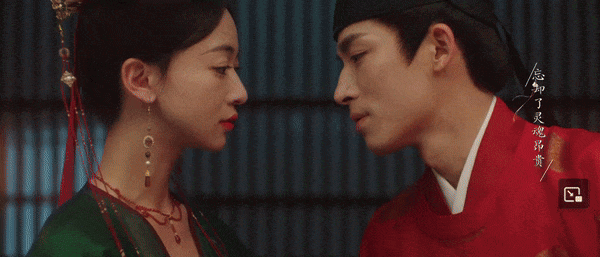
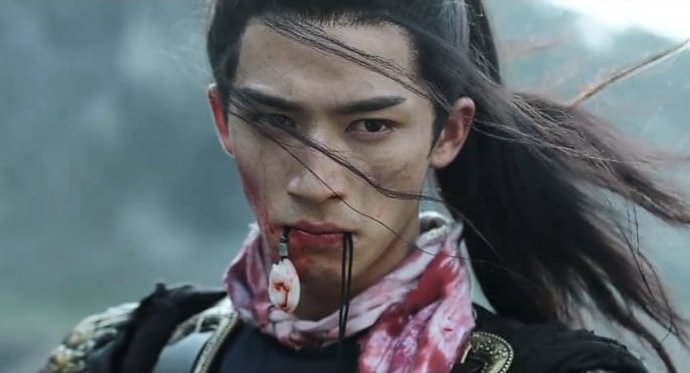
Duke Su's white horse
Jiang Li/Xue Fang Fei is Buddhist and in one of the scenes, she professes her beliefs to Duke Su. She tells him that she trusts God that everything will turn out well, but he tells her that she should trust in herself, too. In one of the scenes, she goes to the temple.
The white horse is a mythical literary symbol present in Asian culture particularly in Buddhist literature. Siddhartha Gautama, in his palatial life, owned a white horse called Kamthaka. Both are widely portrayed. It is with his horse that Siddhartha Gautama escapes from the palace in search of enlightenment.
According to scholars' interpretation, the white horse symbolizes the transition from Siddhartha Gautama's mundane life to his enlightenment as Buddha. So, we can attribute to Duke Su's white horse not only the symbolism of Jiang Li/Xue Fang Fei's faith in Buddha and her consumed "prophecy" (that everything would turn out well) but also the transition of both to a new life. Like Buddha, Duke Su is also transported from a mundane life (the war) by the white horse into the bosom of a blessed life with his wife.
Despite the special episode reinforcing the happy ending of the series, many fans of The Double have doubts about the happy ending of this beloved and passionate couple. But better than the special episode are the symbols described above: they guarantee a clear happy ending.
The Double is a masterpiece to be seen many times so that we can discover the many treasures of symbolism.

The directors of The Double gave us a lot of homework about interpretation. They aren't explicit guys. Our task, as watchers, is to mine the meaning of certain images and narratives in the vast cultural/erudite river they use in the series.
The Double is a mosaic that embraces theater, painting, music, and literature conceptions, besides semiotics (symbology).
I'm grateful for the aesthetic and emotional pleasure of this series. I had to leave the screen reluctantly, but richer than when I entered this universe of The Double.
Thank you to devitto who edited our article! The images are linked to their sources; otherwise, they are taken from screenshots. First draft by Regina. Visual design, GIFs (made from drama scenes), and preliminary editing by Cho Na. | Edited by: devitto (1st editor) |


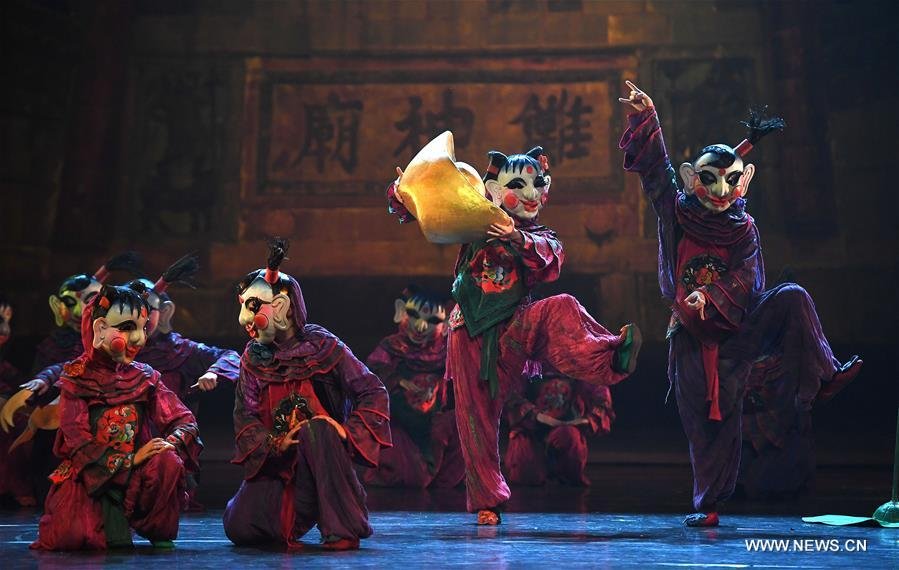
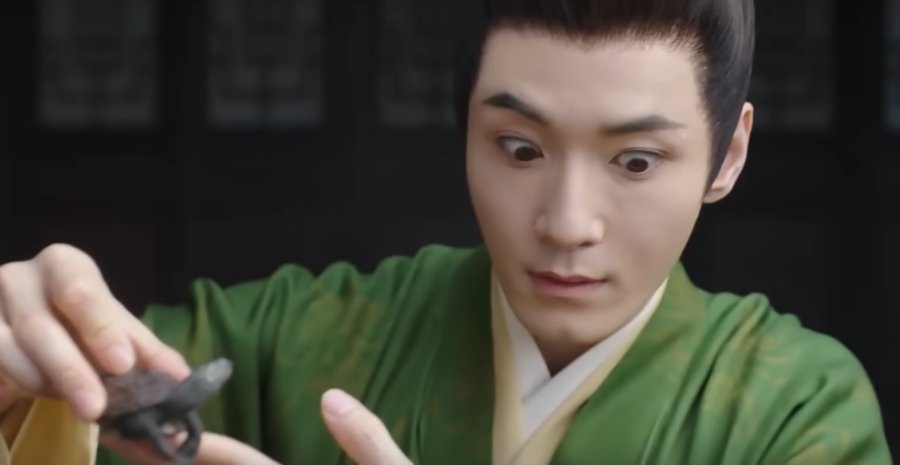
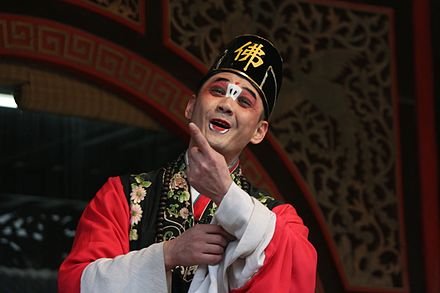
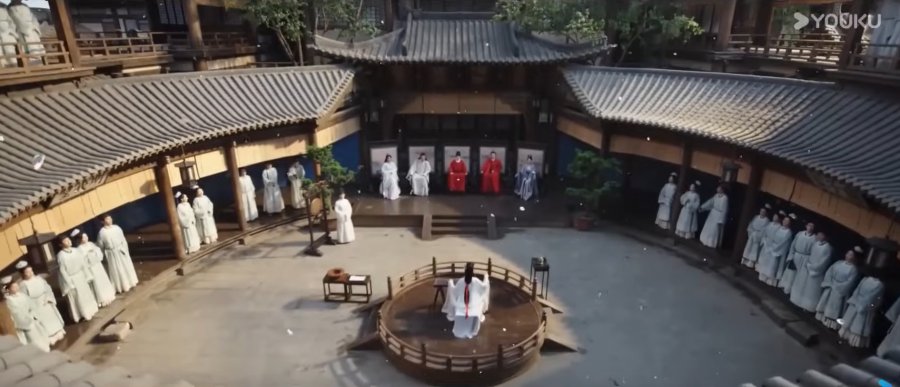
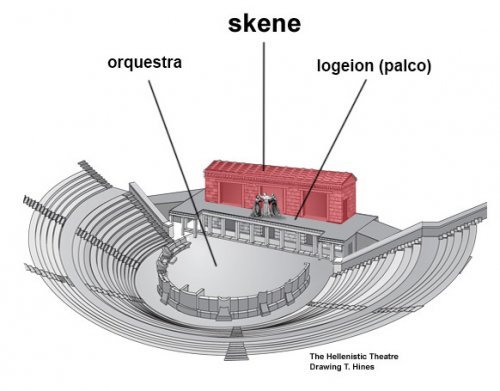
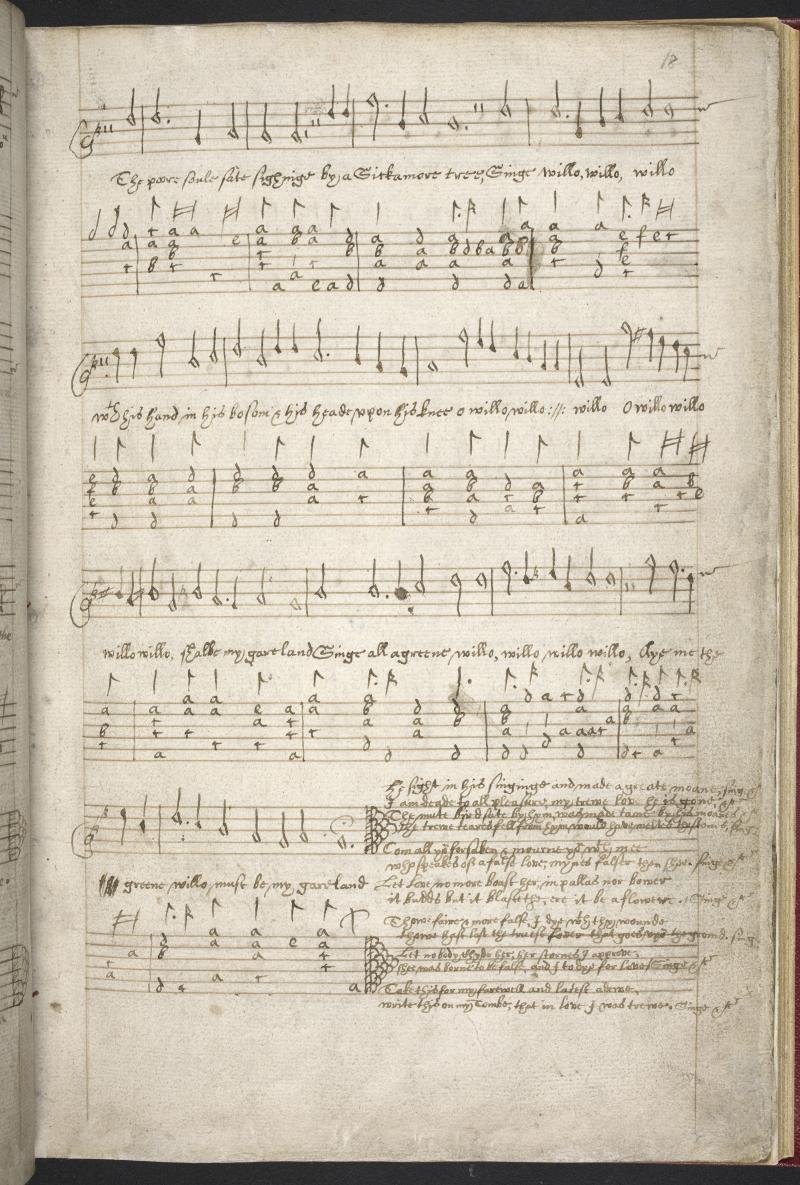
 The oldest record of "The Willow Song" is in a manuscript from 1583 (British Library) in which it appears as a ballad for voice (soprano) with lute accompaniment (written in tablature), with a text similar to the song that Desdemona sings. It is a contemporary folk song to Shakespeare, a sad folk ballad, in which a lady laments her lost love. Eight verses originally describe the pain of a man who dies because of the cruelty and betrayal of his love. Shakespeare changed the song's victim from male to female, making it suitable for Desdemona. [Listen to my recorded "
The oldest record of "The Willow Song" is in a manuscript from 1583 (British Library) in which it appears as a ballad for voice (soprano) with lute accompaniment (written in tablature), with a text similar to the song that Desdemona sings. It is a contemporary folk song to Shakespeare, a sad folk ballad, in which a lady laments her lost love. Eight verses originally describe the pain of a man who dies because of the cruelty and betrayal of his love. Shakespeare changed the song's victim from male to female, making it suitable for Desdemona. [Listen to my recorded "